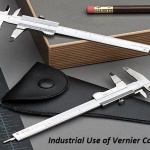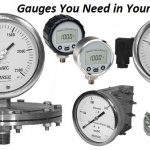Overview of Dial Indicators
Step by Step Guide to Read a Dial Indicator Like a Professional
Due to their widespread popularity, one can buy dial indicators online, or nick them from everyday hardware stores, too. Does it sound like an easy device to use? Nah, for starters here is a rundown of three versatile steps to easily read a dial indicator!
#1)Preparing the Dial Indicator
Start off by simply loosening the beam lock of the dial indicator and then carefully slide the indicator back and forth for a hassle-free operation. Next, close the huge flat dial indicator jaws by bringing them together completely. Before proceeding to the next step, ensure the dial gives a 0 reading.
#2)Taking the Measurement
Here is the moment of reckoning and you would want to exercise a little bit of caution. Measure outer surfaces by gently closing the large flat jaws of the dial gauge on the part to be measured. Cylindrical surfaces such as pipes can be measured by keeping the body of the dial gauge perpendicular to the axis of the cylinder. Failure to do the required action will give imprecise measurements.
Now comes the part of measuring inner apertures, where smaller pointed jaws on the back of the dial indicator’s head are measured by placing these jaws into the aperture and stretching them out until they touch the inner surfaces. Likewise, if you want to measure the inside diameter of a round hole, do ensure the body of the dial indicator is held on the same plane as the hole. Failure to comply could result in grossly inaccurate measurements!
Lastly, measure the inside diameter of a round hole by ensuring the dial gauge jaws measure the complete diameter of the hole. And, by sweeping one jaw back and forth while keeping one jaw of the dial gauge in, you could easily find the sweet spot where the dial gauge jaw (which is being swept) will no longer have the room to sweep. This technique lends you credible results for measuring the full diameter of the hole.
#3)Obtaining the Measurement Reading
To derive a fine reading from a dial indicator, the modus operandi entails determining the position of the leading surface of the dial gauge head along the marked scale on its body. Normally, the lines on the body are marked, wherein each number represents a step of 1 cm. Plus, there are also 10 unnumbered lines in the middle of the numbered lines where each unnumbered line represents 0.1 cm.
All you have to do is to make use of the highest visible line on the left of the leading surface of the dial gauge head. For instance, if the highest visible line is 2 unnumbered lines above the numbered line 4, you will have to jot it down as 4.2 cm.
Up next, convert the reading to mm and then multiply by 10. In the aforementioned example, 4.2 cm will be converted to 42 mm. Next, gather the reading from the dial indicator’s dial. Remember, one full revolution of the dial equals to 1 mm. Subsequently, you can see100 divided lines on the face of the dial indicator to provide you with a resolution of 0.01 mm per line. Now add this figure to the reading and you’re sorted!









Average Rating